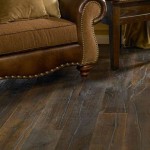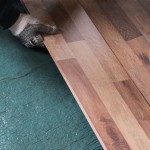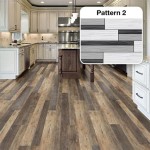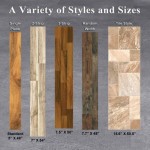Uncovering the Toughest Laminate Flooring for Uncompromising Durability
Laminate flooring has emerged as a popular choice for homeowners seeking a combination of style, durability, and affordability. However, not all laminate flooring is created equal. Some options are more robust and resilient than others, making them ideal for high-traffic areas and demanding environments.
In this article, we delve into the essential aspects of identifying the toughest laminate flooring, providing you with valuable insights to make an informed decision for your home.
1. AC Rating: The Key Indicator of Durability
The AC (Abrasion Class) rating is a crucial factor in determining the toughness of laminate flooring. This rating measures the flooring's resistance to wear and tear, ranging from AC1 to AC6.
For areas with moderate foot traffic, such as bedrooms and living rooms, an AC3 or AC4 rating is generally sufficient. However, for heavy-traffic areas like kitchens, hallways, and commercial spaces, an AC5 or AC6 rating is highly recommended.
2. Wear Layer Thickness: The Protective Shield
The wear layer, also known as the surface layer, is a transparent topcoat that protects the laminate flooring from scratches, stains, and discoloration. Its thickness is measured in millimeters (mm).
A thicker wear layer provides enhanced durability. For residential applications, a wear layer of 0.5mm to 0.7mm is considered adequate. For commercial or high-traffic areas, a wear layer of 1.0mm or thicker is recommended.
3. Subflooring Quality: The Foundation of Strength
The subflooring below the laminate flooring plays a vital role in overall stability and durability. It should be flat, level, and free of moisture. A high-quality subflooring, such as plywood or engineered wood, will provide a solid foundation for the laminate flooring to withstand heavy loads and impacts.
4. Core Material Composition: The Inner Strength
The core material of laminate flooring is responsible for its structural integrity. There are two main types of core materials:
- High-Density Fiberboard (HDF): HDF is a dense and durable core material that provides excellent resistance to moisture and deformation.
- Medium-Density Fiberboard (MDF): MDF is less dense than HDF and has a lower moisture resistance, but it is still a suitable option for low to moderate foot traffic areas.
5. Water Resistance: A Crucial Consideration
Water resistance is an important factor to consider, especially in areas prone to spills or humid conditions. Laminate flooring with a high water resistance rating will be less susceptible to damage from moisture and will maintain its appearance over time.
Look for laminate flooring that features a hydrophobic core material and a sealed surface layer to provide optimal water resistance.
Conclusion
By considering these essential aspects of toughness, you can uncover the toughest laminate flooring that meets your specific needs and ensures a durable and long-lasting investment for your home.
Remember, choosing the right laminate flooring requires a careful evaluation of AC rating, wear layer thickness, subflooring quality, core material composition, and water resistance. By taking these factors into account, you can make an informed decision that will provide you with a beautiful and durable floor for years to come.

Unveiling The Indestructible Discover Toughest Hardwood Flooring Solutions And Design

The Best Laminate Flooring Of 2024

The 6 Best Waterproof Laminate Flooring Brands Of 2024 Floorings

Laminate Floor Guide Lowe S

Deep Cleaning Your Laminate Floors A Step By Guide

The Best Laminate Flooring Of 2024

The Best Laminate Flooring Of 2024

The Best Laminate Flooring Of 2024

The Strongest Laminate Floor In World Ooigemstraat 3 8710 Wielsbeke Belgium Pergo

The 10 Best Laminate Flooring Brands Reviews 2024 Guide Floorings
See Also







